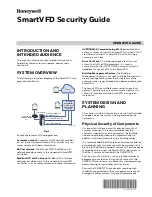
171
Install and Replace Units
•
Upgrading to embedded PRI, T1/D4, MSDN/DPNSS, or BRI requires
a minimum 300 MHz controller (see "Migrate SX-2000 PBX Hardware"
on page 404). To determine the speed of your processor, see “Check
Controller Hardware Profile” on page 118.
•
The Dual T1/E1 Framer does not support XNET, Min/Max, or NFAS.
Dual T1/E1 Framer
•
Each Dual T1/E1 Framer has 2 ports (RJ-45 connectors), each of
which can be used for T1/E1 ISDN or T1/D4. The two protocols can
operate in tandem on the same Dual T1/E1 Framer with any ISDN
variant, i.e. PRI and QSIG.
•
T1/D4 provides for digital E&M, digital DID, or digital CO protocols.
T1/E1 ISDN provides for DMS-100, DMS-250, NI-2 (Bellcore National
ISDN, 5ESS, GTD5), Euro ISDN, 4ESS, Euro-ISDN (CTR4), HKIDAP,
and QSIG protocols.
T1/E1 Combo
•
The T1/E1 combo module, available only for the CX/CXi and
CX II/CXi II controllers at Release 6.0, combines trunking (T1D4 and
PRI ISDN/QSIG) and DSP functionality in a single card. The Release
6.0 version of the combo contained a single T1/E1 framer. The module
also includes 32-channel Echo Cancellation.
•
Supported on the MXe controller.
•
Release 7.0 included a resilient connection for the combo. You can
connect T1/E1 Combo cards in a primary and a secondary controller,
for resilient operation, with a one-to-one RJ-45 cable. Enable the
resilient feature in the Digital Links form. Refer to the Resiliency
document on Edocs (http://edocs.mitel.com) for instructions on how to
configure T1/E1 resiliency.
•
Resilient operation requires that both the primary and secondary
controllers are running Release 7.0 or later software. The secondary
controller may be configured with the new or old version T1/E1 Combo
card or a Dual T1/E1 Framer module.
Quad BRI Framer
•
BRI (Basic Rate Interface) is a basic ISDN service consisting of two 64
Kbps channels and a single 16 Kbps channel (see page 250 in the
Hardware Reference chapter for connection details)
•
The Quad BRI Framer is not supported in North America.
Summary of Contents for 3300
Page 10: ...x Enter document Title using Variable ...
Page 11: ...Chapter 1 Getting Started ...
Page 12: ...2 3300 ICP Technician s Handbook ...
Page 20: ...10 3300 ICP Technician s Handbook ...
Page 21: ...Chapter 2 Initial Setup ...
Page 22: ...12 3300 ICP Technician s Handbook ...
Page 48: ...38 3300 ICP Technician s Handbook ...
Page 49: ...Chapter 3 Installation and Programming ...
Page 50: ...40 3300 ICP Technician s Handbook ...
Page 91: ...Chapter 4 Software Installation ...
Page 92: ...82 3300 ICP Technician s Handbook ...
Page 124: ...114 3300 ICP Technician s Handbook ...
Page 125: ...Chapter 5 Maintenance ...
Page 126: ...116 3300 ICP Technician s Handbook ...
Page 166: ...156 3300 ICP Technician s Handbook ...
Page 167: ...Chapter 6 Install and Replace Units ...
Page 168: ...158 3300 ICP Technician s Handbook ...
Page 247: ...Appendix A Hardware Reference ...
Page 248: ...238 3300 ICP Technician s Handbook ...
Page 251: ...241 Hardware Reference Figure 90 AX Controller Card View Figure 91 AX Controller Rear Panel ...
Page 279: ...Appendix B Installation Planner ...
Page 280: ...270 3300 ICP Technician s Handbook ...
Page 308: ...298 3300 ICP Technician s Handbook ...
Page 309: ...Appendix C Typical Network Configurations ...
Page 310: ...300 3300 ICP Technician s Handbook ...
Page 338: ...328 3300 ICP Technician s Handbook ...
Page 339: ...Appendix D Status LEDs ...
Page 340: ...330 3300 ICP Technician s Handbook ...
Page 378: ...368 3300 ICP Technician s Handbook ...
Page 379: ...Appendix E FRU Part Numbers ...
Page 380: ...370 3300 ICP Technician s Handbook ...
Page 390: ...380 3300 ICP Technician s Handbook ...
Page 391: ...Appendix F System Capacity and Parameters ...
Page 392: ...382 3300 ICP Technician s Handbook ...
Page 402: ...392 3300 ICP Technician s Handbook ...
Page 403: ...Appendix G Older Hardware and Software ...
Page 404: ...394 3300 ICP Technician s Handbook ...
Page 418: ...408 3300 ICP Technician s Handbook ...
Page 431: ......
















































